- Why is Wai
called Dakshin Kashi? What are similarities between the two? Which temples to
see in Wai. What is the historical importance of Wai?
The town of Wai is also referred to as the 'Dakshin-Kashi'. While on a much more modest scale, the town of Wai shares few similarities with Kashi.
While Kashi
is situated on the banks of the mighty Ganga, the town of Wai is located on the
infant Krishna River, just a few miles from the origin of the river. Both towns
share a bond with their river, Ganga represents the soul of the typical
Banarasi; for residents of Wai the Krushnabai (or Krushnamai, as the river is
reverentially and warmly referred) is their dear identity. Both the places have
wonderful Ghats and temples along the river. Wai like Kashi but on a smaller
scale was the center of learning and where the learned resided.
The river
originates in Mahableshar. Wai is
where she leaves the mountains and enters the plains, and thus the importance
of this little village.
Raste, the
maternal family of Gopika-bai, wife of Nanasaheb Peshwe were based at Wai. Incidentally
Nanasaheb Peshwa had come very close to liberating Kashi. That he ultimately
did not due to the request of the local Brahmins is a different matter.
The Rastes build ghats and temples at Wai. Rani Laxmibai of Jhansi's forefathers came from Wai too from where they moved to Kashi. It is said her mother was from Wai, place called Lakshmi Wada. Lakshmibai herself was born in the near Assi at Kashi. In the modern era Tarkateertha Laxmanshatri Joshi foremost among scholars in modern Maharashtra had made Wai his 'Karma-bhoomi'.
In 1659 Afzal Khan had marched into the Maratha territory with a view to finish of Shivaji Maharaj. On the way he destroyed many temples and camped at Wai. Local residents identify the Wada where Afzal Khan he is said to have stayed during this campaign. It is said that a local resident Shendye Shastri sought victory for Shivaji Maharaj by praying to Krushnabai – the Deity representing River Krishna.
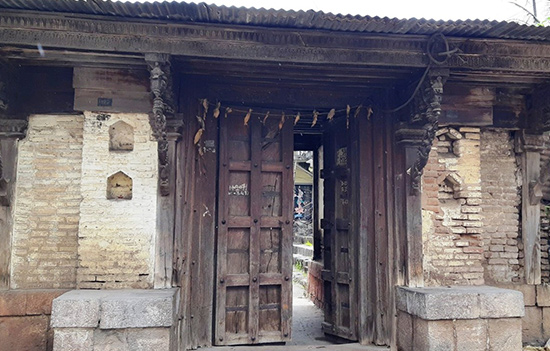 Wada where Afzal Khan is said to have camped.
Wada where Afzal Khan is said to have camped.
After
victory of Shivaji Maharaj over Afzal Khan there was a grand celebration in
honour of Krushnabai. This celebration since then has become an annual festival
of the town in the month of Magh. The festival is
celebrated on different days at each of the seven Ghats. Locals from areas
close to the Ghats get together to plan and celebrate the festivals at their
respective Ghats.
The Ghats
built in stone house a large number of temples.
The Dholya
Ganpati Temple built by the Rastes in the 18th century is popular
for the huge murti of Lord Ganpati. It is 10 feet tall and 8 feet wide.
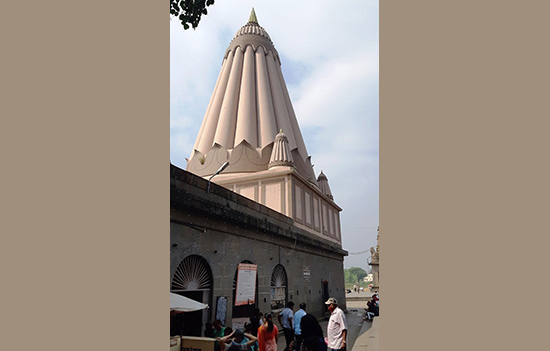 Dholya Ganpati Mandir, Wai.
Dholya Ganpati Mandir, Wai.
The Dhundi
Vinayak Temple is even much older. Other temples include the magnificent Kashi Vishweshwar temple, Ganga Rameshwar Temple,
Mahalaxmi Temple and many more. The spire of the Kashi temple has
Kartikeya-surprising since he is not often seen in the region. At the neighboring
village of Menavli just 2-3 km away is a Wada and Ghat built by Nana Phadnis.
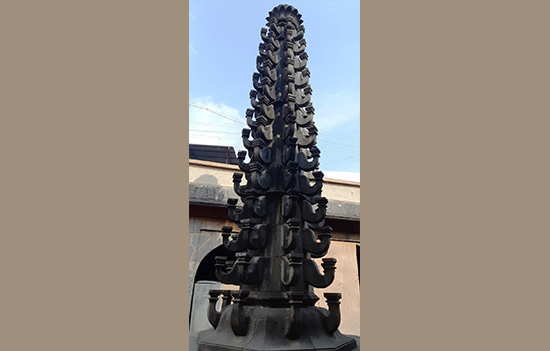 Deepasthamb at Kashi Vishweshwar Temple.
Deepasthamb at Kashi Vishweshwar Temple.
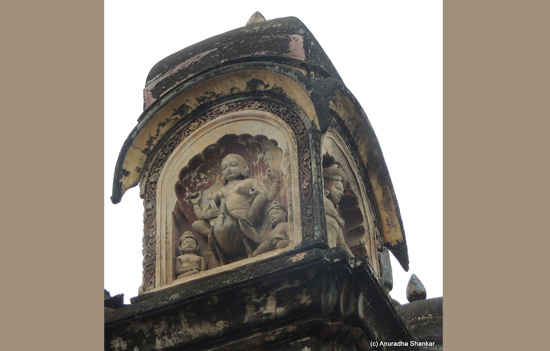 Kartikeya in Kashi Vishweshwar Temple, surprising for this region.
Kartikeya in Kashi Vishweshwar Temple, surprising for this region.
A huge
Portuguese bell, probably spoils of the war at Vasai between Marathas and
Portuguese, is hung in its enclosure.
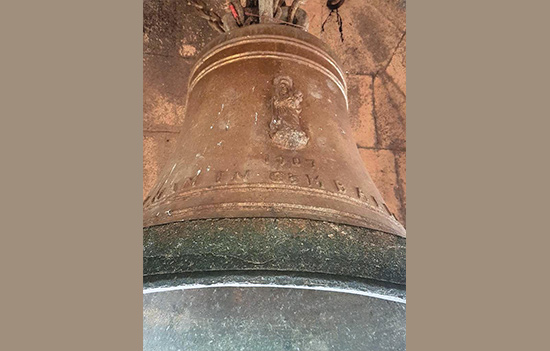 Bell with Portuguese marking at Menavli.
Bell with Portuguese marking at Menavli.
The town of Wai and nearby places is a favourite for film shoots. Since decades, a large number of films have been shot at Wai. To name a few these include – Goonj Uthi Shehnai from in 1950's to films like 22 June 1897 to Sargam from 1970s to more recent ones like Bol Bacchan, Gangaajal, Pardes. There are dozens more.
The town
retains some of the historical characteristics like the VES or the Entry Gate to the town, old embankments and walls, few
surviving wadas and more.
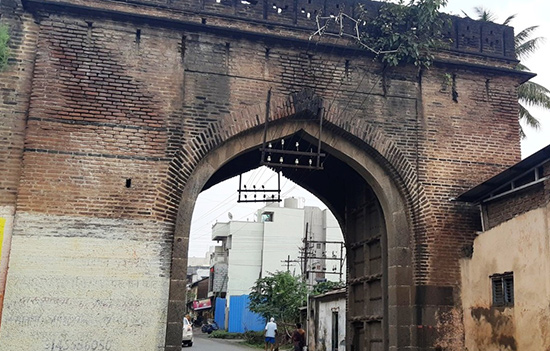 Ganga Ves or Entry Gate at Wai.
Ganga Ves or Entry Gate at Wai.
A visit to
Wai and nearby places like Dhom, Menavli is a great expereince. That Wai is on
the way from Pune to the hill station Mahabaleshwar making it very
accessible. Wai is 95 kms from Pune.
Like all cities and towns in India modernity has set in. Few may rue about the old lost charm, however there is still a lot in store for us to visit and experience.
All pictures by author except Kartikeya one.
Also
read
1. The Many Kashis of India – Memories of a Civilization
2. MTDC blog
3. Close by is Ajinkyatara Fort
4. Close by Dhom Dham Dam